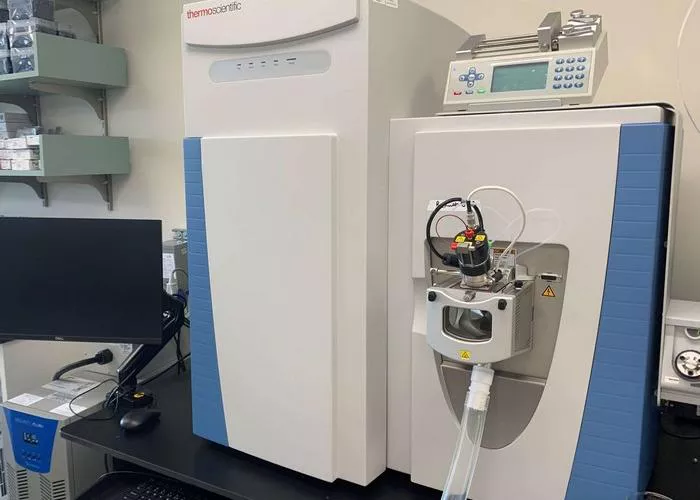Infrared (IR) spectroscopy is a widely used analytical technique in various scientific and industrial fields, including chemistry, pharmaceuticals, material science, and environmental analysis. It is employed to identify molecular structures, detect chemical bonds, and analyze substances based on their interaction with infrared radiation.
IR spectrometers work by passing infrared light through a sample and measuring the absorption or transmission of specific wavelengths. The resulting spectrum provides a molecular fingerprint unique to the substance being analyzed. This makes IR spectroscopy an invaluable tool for qualitative and quantitative analysis of organic and inorganic compounds.
Among the different types of IR spectrometers available today, the Fourier Transform Infrared (FTIR) spectrometer is the most commonly used due to its superior accuracy, speed, and sensitivity compared to traditional dispersive IR spectrometers.
Types of IR Spectrometers
Before exploring why FTIR is the most popular choice, it is essential to understand the different types of IR spectrometers available:
Dispersive Infrared Spectrometers – Use a monochromator to disperse IR light into component wavelengths, which are then measured individually.
Fourier Transform Infrared (FTIR) Spectrometers – Utilize an interferometer to collect spectral data in a single measurement, allowing for rapid and accurate analysis.
Near-Infrared (NIR) Spectrometers – Operate in the near-infrared region (700-2500 nm) and are used primarily for non-destructive analysis in industries such as pharmaceuticals and food processing.
Mid-Infrared (MIR) Spectrometers – Function in the mid-infrared range (2.5-25 µm) and are commonly used for detailed molecular structure analysis.
Far-Infrared (FIR) Spectrometers – Cover the far-infrared region (25-1000 µm) and are used in applications like semiconductor research and astrophysics.
Why is FTIR the Most Commonly Used IR Spectrometer?
FTIR spectrometers have largely replaced dispersive IR spectrometers in most laboratories and industrial settings. Several key factors contribute to their widespread adoption:
1. Higher Sensitivity and Accuracy
FTIR spectrometers use an interferometer to capture all infrared wavelengths simultaneously, which enhances the signal-to-noise ratio. This results in more precise spectral measurements and better detection of low-concentration substances.
2. Speed and Efficiency
Unlike dispersive spectrometers that scan one wavelength at a time, FTIR instruments measure all wavelengths in a single scan. This dramatically reduces analysis time and increases throughput, making FTIR ideal for high-volume sample testing.
3. Wide Spectral Range
FTIR spectrometers can analyze a broad spectral range (from near to far IR), making them versatile for various applications, from organic compound identification to polymer and mineral analysis.
4. Minimal Sample Preparation
FTIR analysis often requires little to no sample preparation, reducing analysis time and the need for extensive handling. Many FTIR instruments support direct sample measurement using techniques such as attenuated total reflectance (ATR), which eliminates the need for complex sample processing.
5. Improved Data Processing with Fourier Transform Algorithm
FTIR instruments use a mathematical algorithm called the Fourier Transform to convert raw interferogram data into an interpretable spectrum. This results in faster, more accurate, and highly reproducible spectral data.
6. Better Signal-to-Noise Ratio
FTIR’s ability to measure all wavelengths simultaneously means that more data can be collected in a shorter time, which improves the signal-to-noise ratio. This allows for better detection limits and enhanced spectrum clarity.
7. Compatibility with Advanced Software and Libraries
Modern FTIR spectrometers integrate with powerful software for spectrum analysis, making it easier to identify unknown compounds. Additionally, extensive spectral libraries are available for reference, aiding in rapid and accurate material identification.
Common Applications of FTIR Spectroscopy
Due to its advantages, FTIR spectrometry is extensively used in diverse applications, including:
Pharmaceutical Industry: Identifying drug compounds, checking formulation consistency, and ensuring regulatory compliance.
Chemical Industry: Determining molecular structures and monitoring chemical reactions.
Forensic Science: Analyzing unknown substances and detecting trace evidence in criminal investigations.
Environmental Science: Detecting pollutants in air, water, and soil.
Food and Beverage Industry: Ensuring product quality, detecting adulteration, and verifying ingredient composition.
Polymer and Material Science: Studying polymer structures, degradation analysis, and quality control.
How to Choose the Right FTIR Spectrometer
When selecting an FTIR spectrometer, several factors should be considered to match the instrument to the intended application:
Wavelength Range: Ensure the instrument covers the required spectral region (near, mid, or far IR).
Detector Type: Choose between deuterated triglycine sulfate (DTGS) for general use or mercury cadmium telluride (MCT) for higher sensitivity applications.
Sampling Accessories: Consider accessories like ATR, transmission cells, or diffuse reflectance attachments for different sample types.
Resolution Requirements: Higher resolution (e.g., 0.5 cm⁻¹) is necessary for detailed structural analysis, while lower resolutions (e.g., 4 cm⁻¹) suffice for routine testing.
Software and Library Support: Opt for an instrument with a comprehensive spectral library and user-friendly software.
Conclusion
The Fourier Transform Infrared (FTIR) spectrometer is the most commonly used IR spectrometer due to its high sensitivity, speed, accuracy, and versatility. It has revolutionized infrared spectroscopy by making the process more efficient and accessible across various industries. Whether in pharmaceuticals, forensic science, environmental analysis, or materials research, FTIR spectrometers provide reliable and reproducible results, solidifying their status as the preferred choice for IR spectroscopy.
By understanding the benefits and applications of FTIR technology, scientists and engineers can make informed decisions when selecting an IR spectrometer for their specific needs. As advancements in spectroscopy continue, FTIR instruments will likely become even more sophisticated, further enhancing their capabilities and expanding their range of applications.

